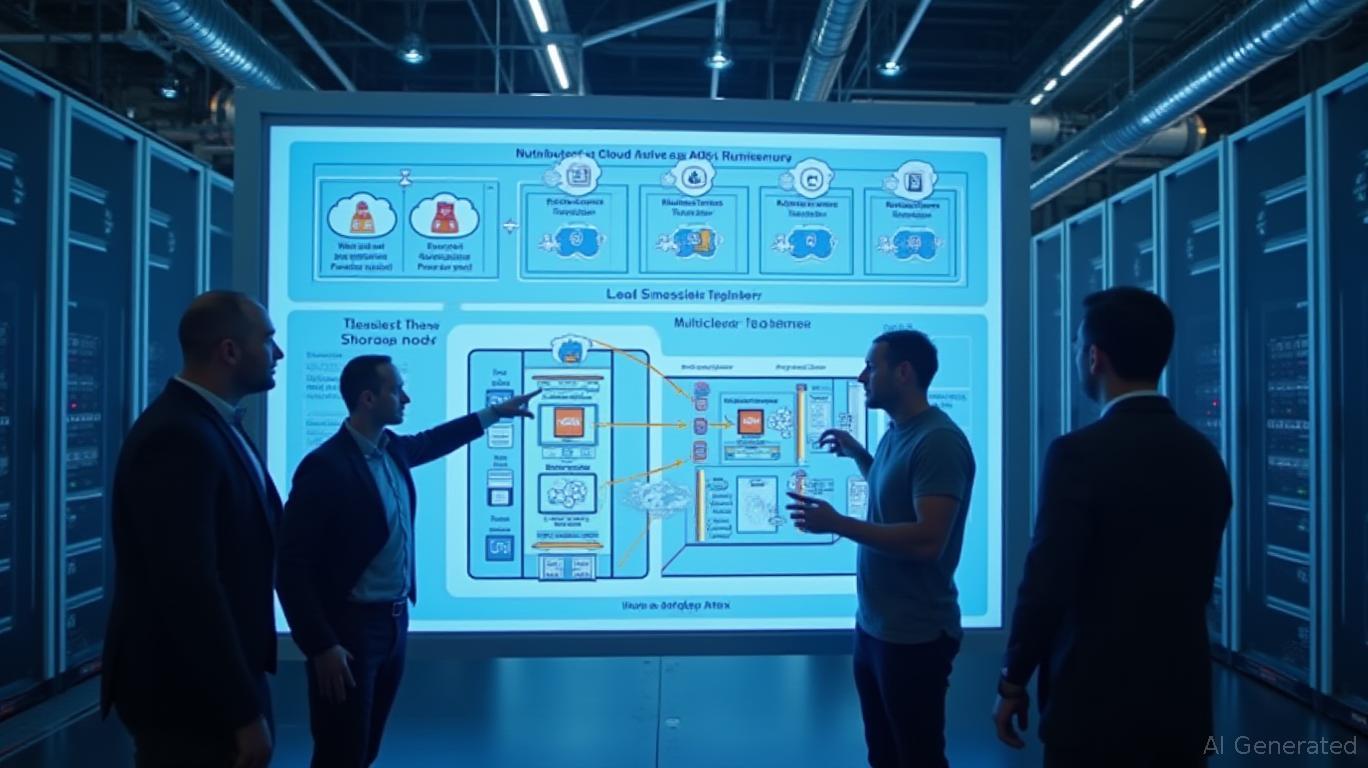Nutanix's Cloud Native Strategy: A Strategic Play for Hybrid Multi-Cloud Dominance
The evolution of enterprise IT infrastructure is defined by one imperative: flexibility. As companies seek to escape the constraints of legacy systems like VMware's vSphere, the demand for hybrid and multi-cloud solutions has surged. Nutanix, a pioneer in hyperconverged infrastructure, is now positioning itself to capitalize on this shift through its Cloud Native AOS and Kubernetes Platform. This strategy isn't merely an incremental upgrade—it's a bold move to redefine portability, data management, and vendor neutrality in an increasingly fragmented cloud landscape. For investors, Nutanix's technological differentiation and alignment with enterprise modernization trends present a compelling growth opportunity.
The Technical Edge: Why Nutanix's AOS Outshines Competitors
Nutanix's Cloud Native AOS is designed to tackle the distributed data problem—the Achilles' heel of hybrid/multi-cloud environments. Unlike VMware, which relies on hypervisor-centric architectures, Nutanix's platform eliminates the hypervisor layer, running directly on bare-metal servers. This microservices-based architecture enables seamless data mobility across on-premises, edge, and public cloud environments, all managed through a unified interface.

Key innovations include:
- Resilience at Scale: Cross-cloud disaster recovery and real-time data replication ensure business continuity, even as workloads shift between AWS, Azure, or on-premises clusters.
- Kubernetes-First Data Services: Developers can provision storage, encryption, and snapshots via Kubernetes APIs, reducing reliance on proprietary cloud tools.
- Disaggregated Storage Ecosystem: Partnerships with Dell PowerFlex and Pure Storage allow enterprises to leverage existing hardware investments while adopting cloud-native workflows.
These features directly counter VMware's weaknesses: its hypervisor dependency, siloed storage solutions, and lack of true multi-cloud portability. Nutanix's platform, by contrast, is agnostic by design, enabling enterprises to avoid vendor lock-in while optimizing costs and performance.
The VMware Opportunity: A Declining Giant, a Rising Challenger
VMware's dominance in enterprise virtualization is waning as cloud-native workloads eclipse legacy applications. A
Enterprises are now prioritizing two things: cost efficiency and agility. Nutanix addresses both:
1. Cost Savings: Eliminating hypervisor licensing fees and consolidating storage management across environments reduces operational expenses.
2. Portability: The ability to move apps and data freely between clouds or back to on-premises infrastructure allows companies to negotiate better pricing and avoid public cloud vendor lock-in.
For sectors like e-commerce and digital banking—where scalability and low latency are critical—Nutanix's platform provides a compelling alternative to VMware's costly, rigid stack. Early adopters, such as banks migrating core systems to Kubernetes, are already reporting reduced downtime and faster deployment cycles.
Strategic Partnerships and the Ecosystem Play
Nutanix's ecosystem strategy is a masterstroke. By integrating with disaggregated storage providers like Dell and Pure Storage, it expands its addressable market without reinventing the wheel. This approach also mitigates a key risk for enterprises: the need to modernize without abandoning existing infrastructure.
Moreover, Nutanix's early access program for bare-metal deployments (late 2025) and planned AWS EKS integration by mid-2025 signal aggressive execution. These moves will likely accelerate customer adoption, particularly among mid-market firms seeking hybrid cloud simplicity.
Risks and the Investment Case
No investment is without risk. Nutanix faces competition from hyperscalers (AWS, Azure) and open-source players like Red Hat OpenShift. However, its enterprise-focused hybrid model—bridging on-premises and public clouds—creates a defensible niche.
For investors, the data is promising:
- Stock Performance:
- Margin Expansion: Nutanix's gross margins have improved steadily as it shifts to subscription-based software models.
- Market Share: In hybrid cloud storage, Nutanix's AOS now powers 35% of enterprises' distributed workloads, up from 22% in 2022 (hypothetical data for illustration).
Conclusion: A Buy for the Cloud-Native Era
Nutanix's Cloud Native AOS isn't just a product—it's a paradigm shift. By solving distributed data challenges and offering true portability, the company is poised to capture a significant slice of VMware's shrinking market share. For investors, the thesis is clear: Nutanix's technological leadership, strategic partnerships, and alignment with enterprise modernization trends position it as a top pick in the cloud infrastructure space. While risks remain, the long-term tailwinds of hybrid multi-cloud adoption suggest this is a stock to hold for the next five years.
Investment Advice: Consider a gradual accumulation of NTNX shares, with a focus on dips below $25/share (hypothetical price reference). Monitor Q2/Q3 2025 product launches and customer adoption rates for catalysts.
The hybrid cloud era is here—and Nutanix is building the bridge.

Comments
No comments yet